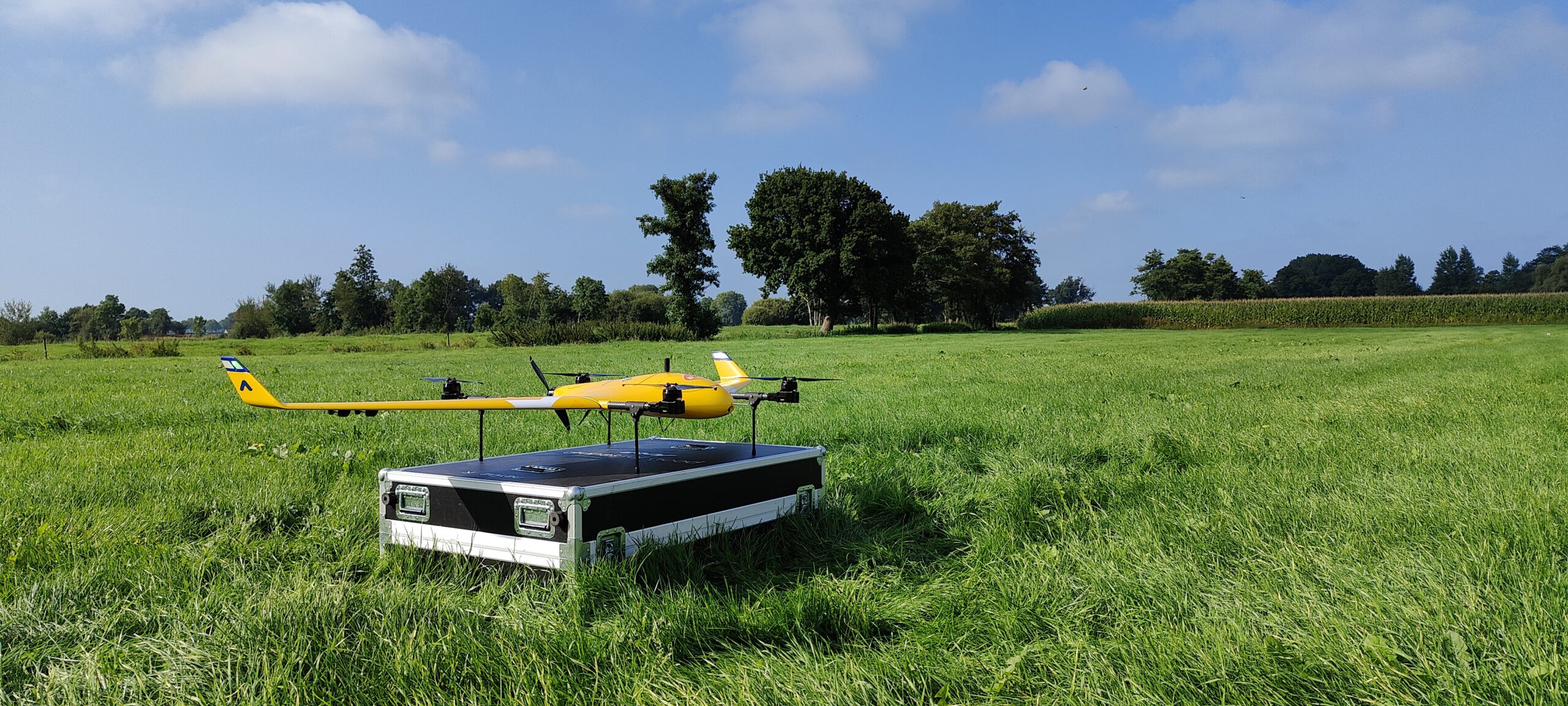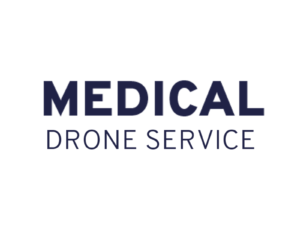To keep healthcare accessible and available by deploying innovative mobility solutions. That is the shared ambition of the parties that have partnered up to form the Medical Drone Service (MDS). The project is an initiative by ANWB and PostNL, who are now experimenting with the transportation of medical products, such as body tissue and fluids, via drones. Isala hospital is one of the participating healthcare partners. Isala wants to deploy drones in the future for medical transport purposes in order to make transport faster, cheaper and more sustainable. A drone can save 10 minutes on a 20-kilometre journey compared to transportation by car, which is also more polluting, more expensive and less safe[1] . Initial results are hopeful; research shows that transportation by drones does not affect the quality of transported blood [2].

From dream to drone
Their communication started at a smart mobility event in 2019 where parties shared their dreams about the future deployment of drones in healthcare. “Isala is currently building a new location in Meppel. We are also thinking about the lab of the future and point-of-care diagnostics close to the patient. This isn’t always successful so we are looking for sound alternatives to do it as intelligently and efficiently as possible. One idea was to deploy a drone to establish a quick connection between our Zwolle and Meppel locations”, says Klaas Henk van der Steege, policy & support advisor at Isala. This idea proved to be feasible, in part due to the relatively quiet airspace between Meppel and Zwolle. The consortium thus embraced the concept for further elaboration.
They opted for a phased approach to generate trust in the deployment of drones in healthcare logistics. The consortium is largely dependent on legislation governing the use of drones, drafted by the European Union Aviation Safety Agency (EASA). “Based on the EASA rules, we defined three phases within this project for testing the safety and reliability of a drone. In the first phase, we flew over an open field (a shielded area). And in the second phase, we did test flights over a thinly populated area between Meppel and Zwolle”, Simon Prent, drone operations manager at ANWB explains. The third phase is about to start, where the done will be doing test flights over a densely populated area.
“It was great to see that healthcare institutions showed a lot of demand for our project from the start, since we will ultimately have to reach national coverage with our drone service. Every organisation actively contributes to the project based on their specific expertise”, says Quirijn de Geus, business developer at PostNL. On top of the initiators and various healthcare organisations, drone builder Avy and KPN have now joined the consortium as well.

Still, not everyone was equally enthusiastic about the deployment of drones in healthcare logistics at the start of the project. “At first, hospitals were sceptical and wondered whether we would be able to guarantee the safety of the transport”, Van der Steege explains. Plus, the consortium quickly realised that although healthcare professionals do want to innovate, there is limited room for developing and implementing something together. In order to increase support and accelerate the development and implementation of the drone, the consortium organised workshops and brainstorming sessions with (healthcare) professionals involved. They extensively discussed the logistic bottlenecks at the hospital, for example, which underlined the urgency of the project. Van der Steege: “It is very important to include individuals who can bridge the gap between technology and healthcare.” As time progressed, interest and confidence in the project grew.
Another constant challenge for the consortium is the uncertainty associated with the relatively young drone market. “We took a dive into the deep end together, which demanded the commitment of all parties while nobody knew or knows what the market will look like in a couple of years”, de Geus clarifies. Because of the novelty, uncertainties and dependencies involved, the consortium treated the project as an experiment. This meant letting go of the traditional KPI-based management system. Van de Steege admits that the uncertainties made it difficult for partners to justify the steps and progress internally: “Of course, our Executive Board asks about the progress and deliverables of the MDS project and whether it continues to make sense. We need to be able to demonstrate progress continuously which does make it a taxing endeavour.” At the same time, the involved organisations offer enough room for experimentations and clear milestones have been agreed for assessment purposes. A vital approach to build towards the future together.
Future perspective
The current pilot will end in 2023. In addition to continued test flights, the period ahead will be all about establishing the business case and demonstrating the safety according to applicable legislation and regulations. Prent is convinced that MDS will improve logistic efficiency and mitigate costs: “Take the Wadden Islands for instance. It would be great if we could transport blood samples of a patient from the island to the mainland The patient will be able to stay home, which is cheaper and less harmful to the environment. The present use of helicopters for emergency care, for example, can never become cost-effective. Drones can offer a solution.” The consortium is currently working on a computational model to demonstrate the cost-savings and added value of drones.
There are also some technical hurdles to take before medical drones can be fully implemented. This includes additional safety measures by improving redundancy and connectivity as well as the fact that a drone has to be able to fly in all weather conditions. When it comes to barriers however, legislation and regulations are one of the biggest inhibiting factors. The drones are currently flying automatically while controlled from a command vehicle on the ground. Prent: “Current legislation does not facilitate drones entering the airspace and flying outside the line of sight of the pilot.”
According to Prent, an important step is to meet the U-Space agreements by 2023, which will serve as a highly automated form of air traffic control for unmanned flights. U-Space aims to ensure orderly unmanned air traffic control in the future. ‘’ Drones have been flying in Ghana and in the Highlands in Scotland. But the Netherlands is particularly challenging due to the high population density of the area and relatively busy air traffic. It is very important for us to focus on safe integration into the airspace at an early stage,” Prent explains. Meanwhile, Van der Steege is talking to Isala’s building administrators to get permission for future landing sites.
In addition to experimentation and development, the consortium retains its focus on involving new (healthcare) partners. The aim is to work towards a nationwide network of drone hubs that connects all healthcare institutions and thus makes healthcare logistics more efficient and sustainable.
References
- https://www.rtvoost.nl/nieuws/1722653/Medische-drone-heeft-eerste-lange-vlucht-gemaakt-tussen-ziekenhuizen-in-Zwolle-en-Meppel
- Perlee D, van der Steege KH, den Besten G, The effect of drone transport on the stability of biochemical, coagulation and hematological parameters in healthy individuals, Clinical Chemistry and Laboratory Medicine (CCLM), 2021

